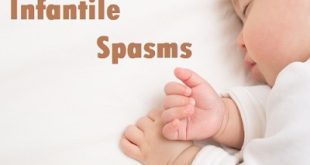Overview
Pseudobulbar affect (PBA), also known as emotional incontinence, is a neurological condition characterized by involuntary and uncontrollable episodes of laughing or crying that are exaggerated or unrelated to the person’s emotional state. People with PBA may find themselves laughing or crying suddenly and inappropriately, even when they do not feel happy or sad. These episodes can be triggered by seemingly minor stimuli or occur spontaneously, making it difficult for individuals to control their emotional expressions. PBA is often associated with neurological disorders or injuries that affect the brain regions responsible for regulating emotions, such as traumatic brain injuries, multiple sclerosis, Alzheimer’s disease, stroke, and amyotrophic lateral sclerosis (ALS). It is essential to note that PBA is distinct from the person’s actual emotional state and is a result of disrupted neural pathways rather than genuine feelings.
The impact of PBA on an individual’s life can be significant, leading to social isolation, embarrassment, and impaired quality of life. People with PBA may withdraw from social interactions to avoid uncomfortable situations or misunderstandings caused by their uncontrollable emotional outbursts. Additionally, PBA can be misinterpreted by others, leading to misunderstandings and strained relationships. While there is no cure for PBA, various treatment options, such as medications and behavioral therapy, can help manage its symptoms and improve the individual’s overall well-being. Proper diagnosis and understanding of PBA are crucial for providing appropriate support and empathy to those affected, allowing them to navigate their daily lives with greater ease and confidence.
Epidemiology
The disorder occurs in association with a variety of brain disorders (Table 1).9 The range of estimates of prevalence in various neurological disorders is high, ranging from 5% to well over 50%, depending on diagnostic criteria, method-ologies, and patient populations studied.2,10–14 In particular, the differentiation between emotional responses that are concordant with mood but exaggerated, and those that are discordant with mood, has led to substantial differences in published prevalence rates. A recent novel attempt to estimate the prevalence of PBA in the USA across six neurological disorders utilized an online survey of patients with ALS, MS, Alzheimer’s disease, stroke, Parkinson’s disease, and traumatic brain injury. Depending upon the scoring crite-ria used for the online instruments, prevalence rates ranged from 9.4%–37.5%, resulting in an estimated 1.8–7.1 million affected individuals in the USA. Even if the lower estimate is accepted as being the most accurate, this means that PBA is a significant national health issue in the USA, occurring in greater numbers of individuals than those affected by Parkinson’s disease, MS, or ALS.
Pathophysiology of Pseudobulbar Affect
The pathophysiology of Pseudobulbar Affect (PBA) is closely linked to disruptions in the neural circuitry that control emotional expression. While the exact mechanisms are not fully understood, it is believed that PBA arises from damage or lesions in specific areas of the brain responsible for regulating emotional responses, particularly in the frontal cortex, limbic system, and brainstem. These areas are involved in processing and integrating emotional stimuli and coordinating appropriate emotional expressions.
In neurological conditions like multiple sclerosis, traumatic brain injury, ALS, stroke, and Alzheimer’s disease, the neural pathways connecting these brain regions can be compromised. This disruption can lead to a lack of inhibitory control over emotional signals, causing exaggerated and involuntary emotional responses. Essentially, the disconnect between the emotional centers in the brain and the areas responsible for motor control of facial muscles and vocalization results in episodes of uncontrollable laughter, crying, or both, which are characteristic of PBA.
Neurotransmitters, the chemical messengers in the brain, also play a role in PBA’s pathophysiology. Imbalances in neurotransmitter levels, particularly serotonin and glutamate, have been implicated in the development of PBA symptoms. Serotonin, known as the “feel-good” neurotransmitter, helps regulate mood and emotion. Reduced serotonin levels can disrupt emotional regulation, contributing to the intensity and frequency of PBA episodes. Glutamate, a neurotransmitter responsible for excitatory signals in the brain, may also be dysregulated in individuals with PBA, further influencing the excessive and inappropriate emotional responses seen in this condition.
Understanding these underlying neural and biochemical processes is crucial for developing targeted treatments for PBA. Medications that modulate neurotransmitter levels, such as selective serotonin reuptake inhibitors (SSRIs) and glutamate modulators, have been explored as potential therapeutic options to help restore the balance of emotional expression in individuals affected by PBA. Additionally, ongoing research continues to shed light on the intricate pathways involved in PBA, paving the way for more effective interventions and improved quality of life for those living with this condition.
Types of Pseudobulbar Affect
Pseudobulbar Affect (PBA) can manifest in different ways, leading to various types of emotional expressions. The two primary types of PBA presentations are:
PBA with Emotional Lability
This type of PBA is characterized by sudden and intense episodes of laughter, crying, or both. These emotional outbursts are often triggered by stimuli that would not typically evoke such responses, and they can be difficult to control. For example, a person might start laughing uncontrollably in a situation that is not humorous or burst into tears without feeling sad or upset. These episodes are excessive and disproportionate to the individual’s actual emotional state.
PBA with Emotional Suppression
In this type of PBA, individuals may suppress their genuine emotions due to the fear of experiencing uncontrollable episodes of laughter or crying. They actively try to hold back their emotions, leading to emotional suppression. While they may still experience the typical emotions a person feels in response to different situations, they inhibit the expression of these emotions, creating a mask-like demeanor. This suppression can cause significant distress and can lead to social withdrawal and difficulties in interpersonal relationships.
It’s important to note that these types of PBA are not mutually exclusive, and individuals with PBA can experience a combination of emotional lability and emotional suppression, with varying degrees of severity. The specific type and intensity of PBA can vary from person to person and depend on the underlying neurological condition or injury that has caused the disruption in emotional regulation pathways. Treatment and management strategies are often tailored to the specific type and presentation of PBA experienced by the individual.
What are the causes of pseudobulbar affect?
A definite cause of laughing disorder is yet to be established. However, this disorder is commonly observed in people with neurological conditions. Depending on diagnostic frameworks and other factors, an estimated 5% to 50% of people with neurological illnesses live with pseudobulbar affect.
These include disorders such as:
- Amyotrophic lateral sclerosis
- Cerebellar disorders
- Multiple sclerosis
- Traumatic brain injuries
- Alzheimer’s disease
- Stroke
- Brain tumor
- Epilepsy
- Parkinson’s disease
- Stroke
A lack of voluntary control over emotions is likely responsible for laughing disorders. Playing a key role in this is the cerebellum. This part of the brain regulates emotional responses to correspond with social situations and mood.
Likewise, neurotransmitters such as serotonin and glutamate can impact the development of emotional incontinence. This is because of the vital role they play in cerebellar pathways in the brain.
Symptoms of Pseudobulbar Affect
Pseudobulbar affect can be diagnosed by a neurologist. Many times, a neurologist can recognize the signs of PBA from you or your loved one’s description. There are also questionnaires that can measure PBA in patients with ALS or MS.
The symptoms of pseudobulbar affect include:
- Uncontrollable laughter or crying that does not match your feelings.
- Prolonged crying and laughing that is difficult to stop.
- Laughter or crying that is disproportionate when discussing topics with emotional content.
- Spontaneous expression that is unrelated to the situation.
Complications
Pseudobulbar Affect (PBA) can lead to several complications and challenges for individuals affected by the condition. These complications can significantly impact their quality of life and overall well-being. Here are the key complications associated with PBA:
- Social Isolation: Individuals with PBA may withdraw from social interactions due to the fear of experiencing uncontrollable emotional outbursts, leading to social isolation and reduced quality of life.
- Impaired Relationships: Misunderstandings arising from inappropriate emotional responses can strain relationships with family, friends, and colleagues, leading to difficulties in maintaining personal and professional connections.
- Increased Emotional Distress: The inability to control emotional expressions can cause emotional distress, embarrassment, and frustration, exacerbating the impact of the underlying neurological condition on mental health.
- Reduced Self-Esteem: Frequent and unpredictable emotional outbursts can lower self-esteem, making individuals feel self-conscious and less confident in social situations.
- Negative Impact on Mental Health: PBA-related emotional episodes, especially when accompanied by social isolation and impaired relationships, can contribute to depression, anxiety, and other mental health issues.
- Impaired Occupational Functioning: Difficulties in controlling emotions can affect performance at work, potentially leading to job loss or decreased productivity in professional settings.
- Challenges in Daily Activities: PBA episodes can interfere with daily activities, making it challenging to engage in tasks that require emotional stability, such as caregiving responsibilities or participating in community events.
- Difficulty in Seeking Help: Due to the social stigma associated with inappropriate emotional expressions, individuals with PBA may avoid seeking medical or psychological help, further delaying diagnosis and appropriate management.
- Caregiver Strain: Family members and caregivers of individuals with PBA may experience increased stress and frustration when trying to cope with the unpredictable emotional episodes, impacting their own well-being.
- Impact on Overall Quality of Life: The combination of these complications can significantly diminish the overall quality of life for individuals affected by PBA, making it essential to address the condition through appropriate medical and psychological interventions.
Risk factors of Pseudobulbar Affect
Pseudobulbar Affect (PBA) does not have specific risk factors per se, but it often occurs as a symptom of underlying neurological conditions or injuries that do have their own risk factors. Some of these underlying conditions and injuries include:
- Brain Injuries: Traumatic brain injuries, such as those from accidents or falls, can damage brain regions responsible for emotional regulation, increasing the risk of PBA.
- Neurological Diseases: Certain neurological diseases, including multiple sclerosis, amyotrophic lateral sclerosis (ALS), Alzheimer’s disease, Parkinson’s disease, and stroke, can disrupt neural pathways and lead to PBA.
- Brain Tumors: Tumors in the brain, especially those affecting areas controlling emotions, can be a risk factor for developing PBA symptoms.
- Infections of the Brain: Infections that affect the brain, such as encephalitis or meningitis, can cause damage to brain regions involved in emotional control, potentially triggering PBA.
- Degenerative Brain Disorders: Progressive degenerative disorders like ALS and certain forms of dementia can damage neural pathways over time, leading to the development of PBA.
- Family History: While not a direct risk factor, having a family history of neurological diseases might indicate a genetic predisposition to certain conditions that can cause PBA.
- Age: Certain neurological conditions that may lead to PBA, such as Alzheimer’s disease and certain types of dementia, become more common with aging, which can increase the risk of PBA in older adults.
- Gender: Some studies suggest that PBA might be more common in certain genders, although the research in this area is ongoing and not yet fully conclusive.
It’s crucial to note that while these factors are associated with conditions that can cause PBA, not everyone with these conditions will necessarily develop PBA.
How to diagnosis pseudobulbar affect?
If you or someone you love is crying or laughing a lot and you don’t know why, talk to a doctor. PBA is hard to diagnose because it mimics other problems like depression or other mood disorders.
Tell the doctor about any symptoms, including when they happen and how long they last. It can help to keep a diary of crying and laughing episodes.
Your doctor won’t need to do tests to diagnose PBA. But to rule out a form of epilepsy that can cause similar symptoms, they might order an electroencephalogram (EEG), a painless test that tracks your brain waves.
Two questionnaires help to tell if the laughing and weeping are signs of PBA:
- Pathological Laughing and Crying Scale (PLACS): The doctor asks you questions about the episodes, including how long they lasted, how they were tied to your mood and social situation, and how upset you felt afterward.
- Center for Neurologic Study-Lability Scale (CNS-LS): You answer questions about your symptoms. How often do you have them? How do they make you feel? For example, “I find myself crying very easily” or “I’m easily overcome with laughter.”
Treatment
Even though there is no absolute cure for PBA, medication can help with managing the disorder. Some of the treatment modalities for PBA include
- Antidepressants: Neurologists may prescribe tricyclic antidepressants, SSRIs (selective serotonin reuptake inhibitors), and low doses of other antidepressants for managing the symptoms of PBA. Amitriptyline, citalopram, venlafaxine, fluoxetine, etc. are some of the common antidepressants used for treating PBA.
- Dextromethorphan (cough suppressant) combined with a low dosage of quinidine sulfate (cardiac arrhythmia medicine) has been approved by medicinal regulatory bodies for the treatment of PBA.
- Beyond the medications, cognitive behavioural therapy (CBT) is also helpful for the treatment of PBA. CBT can help you develop techniques that would help you perform your daily tasks.
Maintaining a journal, talking to people who can understand PBA, and joining support groups can help to ease the emotional toll caused by PBA. If you have experienced symptoms of PBA, you should consult with a neurologist. They will diagnose your condition, and devise a suitable treatment plan for you.
Prevention of pseudobulbar affect
Although PBA is associated with brain injury and different pre-existing neurological conditions, experts aren’t certain why some individuals develop it and others don’t; there isn’t a way to prevent or reduce the risk of developing pseudobulbar affect.
There are things that could help reduce the risk of developing one of the underlying conditions of PBA, namely stroke.
- A person can reduce their risk of stroke by not smoking, treating heart disease or high blood pressure, keeping their blood sugar level within a healthy range, exercising regularly, and staying at a healthy weight.
- There is evidence that suggests that keeping the heart healthy through exercise and diet may help protect the brain.
- Two diets that have positive results in many studies include the DASH (Dietary Approaches to Stop Hypertension) diet and the Mediterranean diet.
 Diseases Treatments Dictionary This is complete solution to read all diseases treatments Which covers Prevention, Causes, Symptoms, Medical Terms, Drugs, Prescription, Natural Remedies with cures and Treatments. Most of the common diseases were listed in names, split with categories.
Diseases Treatments Dictionary This is complete solution to read all diseases treatments Which covers Prevention, Causes, Symptoms, Medical Terms, Drugs, Prescription, Natural Remedies with cures and Treatments. Most of the common diseases were listed in names, split with categories.







